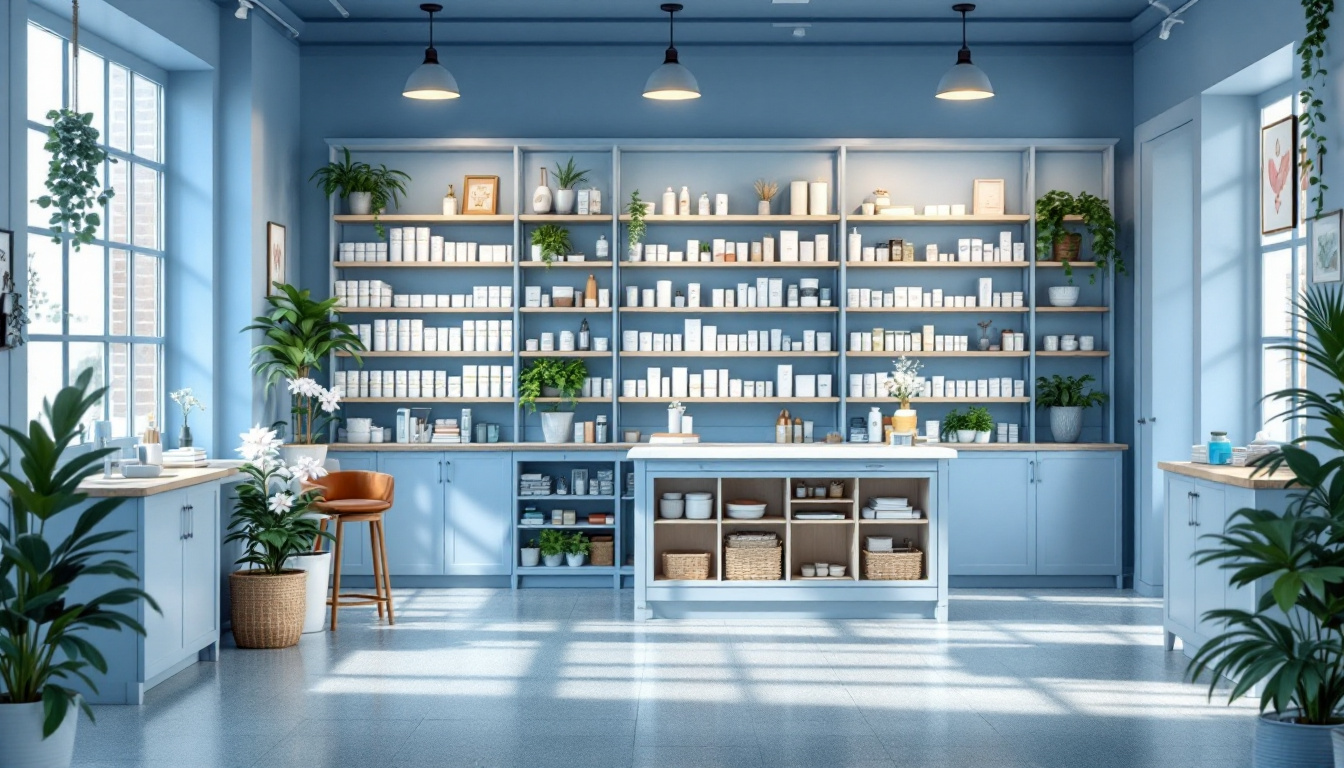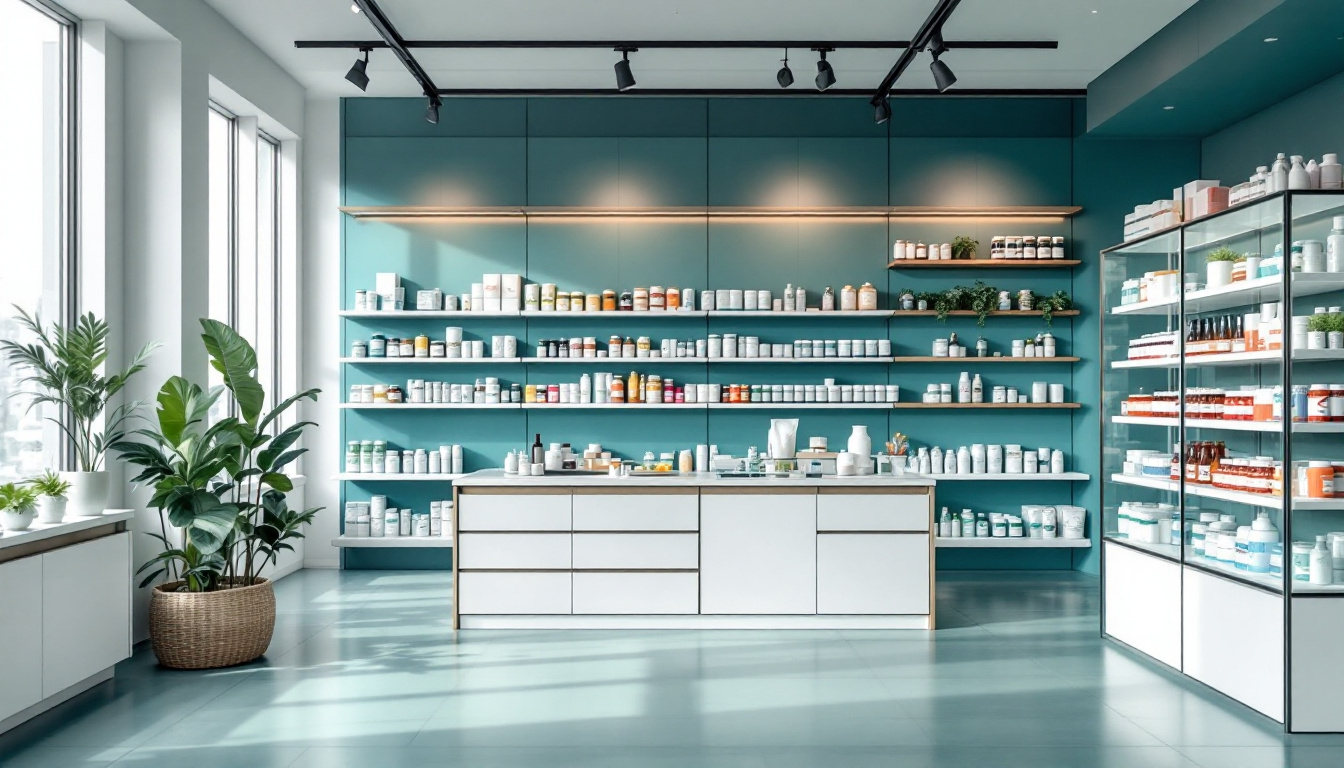How can custom eye drops improve ophthalmic care?

Introduction to Custom Eye Drops
In recent years, there has been a significant shift towards personalized medicine in ophthalmic care, and custom eye drops lie at the forefront of this movement. Built around the unique needs and biological characteristics of individual patients, custom eye drops offer targeted treatment options for a range of eye conditions, from dry eye syndrome to complex posterior segment diseases. This article explores the profound impact custom eye drops could have on improving ophthalmic care, delving into their preparation, advantages, and role in modern healthcare.
Benefits of Custom Eye Drops

What are the advantages of ophthalmic solutions?
Ophthalmic solutions, especially eye drops, offer several benefits for eye health. They excel in reducing dryness, irritation, and inflammation, effectively addressing conditions like red eye. For more serious issues, prescription eye drops can combat infections and lower intraocular pressure. Over-the-counter options, including artificial tears, are designed to lubricate and soothe dry eyes, making them essential for millions suffering from discomfort. However, it’s important to consult an eye specialist, as improper use can mask serious conditions.
What are the benefits of artificial eye drops?
Artificial eye drops, also known as artificial tears, effectively maintain moisture on the eye's surface. They are particularly beneficial for people experiencing dry eye symptoms due to age, medication, or environmental factors like wind. Available in preserved and preservative-free forms, the latter is preferable for severe dryness or frequent use. Regular application can alleviate burning sensations, prevent complications like infections, and maintain surface integrity. If artificial tears don't provide relief, consulting an eye doctor for further options is advisable.
What are the benefits of autologous serum eye drops?
Autologous serum eye drops provide remarkable benefits for those with ocular surface disorders. By lubricating the eye and promoting epithelial healing, they are effective for conditions such as dry eye disease, neurotrophic keratopathy, and persistent epithelial defects. Unlike artificial tears, ASEDs contain natural growth factors, closely mimicking human tears. Studies indicate significant improvements in both subjective symptoms and clinical assessments, such as tear film stability and ocular surface health. Nonetheless, strict aseptic protocols must be followed during their preparation and storage to prevent contamination.
| Type of Eye Drops | Benefits | Additional Notes |
|---|---|---|
| Ophthalmic Solutions | Reduces dryness, irritation, fights infections, lowers pressure | Consultation needed |
| Artificial Eye Drops | Lubricates dry eyes, preserves moisture | Available in preservative-free formulations |
| Autologous Serum Eye Drops | Enhances healing, natural components like human tears | Must maintain strict aseptic conditions |
The Role of Autologous Serum Eye Drops in Treating Dry Eye Syndrome

How are autologous serum eye drops prepared?
Autologous serum eye drops (ASEDs) begin with a simple blood draw of about 40ml from the patient. This blood is then allowed to clot, after which it undergoes centrifugation to separate the serum from its cellular components. The resulting serum is diluted with sterile saline, typically to a 20% concentration. This preparation must occur in sterile conditions to prevent contamination. Once prepared, ASEDs can be stored in a refrigerator for up to 31 days or frozen for extended stability, ensuring they remain effective for treating various ocular surface disorders.
Effectiveness of ASEDs
Clinical studies demonstrate the effectiveness of ASEDs in managing moderate to severe dry eye disease. Patients commonly report notable symptom relief, with some studies indicating improvement rates ranging from 20% to a remarkable 100%. Notably, about 90% of recipients experience enhanced symptoms within just 30 days of starting therapy.
Clinical applications of ASEDs
ASEDs are particularly advantageous for patients with conditions like Sjögren's syndrome, neurotrophic keratitis, and individuals undergoing chemotherapy. Their unique composition can also accelerate healing in post-surgical patients, such as those receiving corneal transplants, where enhanced regeneration of the ocular surface is crucial.
Advantages over traditional treatments
One of the significant advantages of ASEDs over conventional eye drops is their natural composition, closely mirroring that of human tears. They contain vital nutrients and growth factors that artificial tears lack, providing superior benefits, particularly for sensitive patients. Furthermore, ASEDs are hypoallergenic and preservative-free, addressing patient discomfort often associated with commercial eye drops. This personalized approach not only improves comfort but facilitates better adherence to treatment regimens.
Innovative Drug Delivery Systems for Personalized Eye Care

Nanotechnology in ophthalmic care
Nanotechnology is revolutionizing the field of ophthalmology by enhancing drug delivery systems. With the ability to manipulate materials at the nanoscale, these innovative technologies ensure that medications can penetrate ocular tissues more effectively. Nanocarriers, such as liposomes and dendrimers, facilitate targeted delivery, improving the bioavailability of treatments while minimizing systemic side effects.
Advanced drug delivery methods
Alongside traditional methods, advanced drug delivery systems are emerging, focusing on enhancing the patient's therapeutic experience. For instance, Mucus Penetrating Particles (MPPs) and surface-modified nanoparticles are designed to improve penetration into the posterior segment of the eye. This is particularly crucial for patients needing treatments for conditions like diabetic retinopathy or age-related macular degeneration.
Benefits of personalized nanocarriers
Personalized nanocarriers offer tailored solutions that enhance treatment efficacy. By optimizing drug compositions, including factors like pH and osmolarity, these carriers ensure compatibility with the eye's natural environment. This customization not only improves patient comfort but also facilitates higher concentrations of active ingredients directly where they are needed most, greatly enhancing therapeutic outcomes. The shift towards individualized treatments exemplifies the future of eye care, focusing on making therapies safer and more effective for each patient.
Compounding in Ophthalmology: Crafting Tailored Solutions
What is the Role of Compounding Pharmacies?
Compounding pharmacies play a crucial role in ophthalmology by tailoring medications to fit individual patient needs. They create customized eye care solutions that target specific conditions, offering alternatives to commercially available products. This is particularly important for those with unique health requirements or sensitivities.
What Customizations are Available for Eye Drop Formulations?
Customized eye drop formulations can include a variety of adjustments:
- pH and osmolarity: Ensures compatibility with the eye’s natural environment.
- Active ingredients: Combination of multiple agents can enhance treatment efficacy.
- Preservative-free options: Critical for patients with sensitive eyes.
- Specific concentrations: Tailored to individual patient needs.
What are the Benefits Over Standard Treatments?
The benefits of compounded eye drops compared to standard treatments are significant:
- Personalization: Each formulation is designed to meet the unique needs of patients, often resulting in better compliance and outcomes.
- Enhanced comfort: Reduced irritants and allergens lead to a more pleasant application experience.
- Therapeutic advantages: Formulations like autologous serum eye drops leverage the patient's own biological components for healing, proving effective in serious conditions like dry eye disease or post-surgery recovery.
In summary, compounding in ophthalmology not only improves the specificity and effectiveness of treatments but also greatly enhances patient comfort and satisfaction.
Case Study: Plasma Rich in Growth Factors (PRGF) Eye Drops

Preparation and benefits of PRGF therapy
Plasma Rich in Growth Factors (PRGF) eye drops are derived from a patient's own blood. The preparation involves processing the blood to isolate plasma rich in growth factors, which are then formulated into sterile eye drops. This method ensures that the drops contain potent healing properties without the addition of preservatives, making them safer and more suitable for sensitive eyes.
Role in tissue regeneration
The growth factors present in PRGF eye drops, such as EGF and PDGF, play a crucial role in promoting tissue regeneration. These factors stimulate collagen production and enhance cellular proliferation, which are vital for repairing damaged ocular tissues. Patients with severe dry eye or those recovering from ocular surgeries can particularly benefit from these regenerative properties.
Applications in ocular surface disorders
PRGF therapy is effectively used in treating various ocular surface disorders, including severe dry eye syndrome and corneal ulcers. Its ability to promote healing and restore the natural balance of the ocular surface makes PRGF eye drops a valuable option, especially for patients who have not responded well to conventional treatments.
The Future of Eye Care: Tailored Treatments for Posterior Segment Diseases
Recent Innovations in Eye Drop Formulations
The landscape of eye care is evolving, particularly with breakthroughs in eye drop formulations designed to address difficulties faced in treating posterior segment diseases. Traditional topical treatments often struggle to penetrate the eye's barriers effectively. However, innovative drug delivery systems using nanotechnology are facilitating better drug absorption and enhanced efficacy in targeted treatments.
Application of Technology in Customizing Treatments
Recent advances, such as Mucus Penetrating Particles (MPPs) and surface-modified nanoparticles, are paving the way for customized eye drop formulations. These technologies allow for prolonged drug release and improved solubility, directly benefiting patients with conditions like diabetic retinopathy and age-related macular degeneration. The adaption of 3D printing also plays a crucial role here, enabling specific dosing tailored to unique patient needs.
Potential for Improved Patient Outcomes
The movement towards personalized medication is underscored by the success of custom eye drops in treating chronic eye conditions. For instance, studies show significant improvements in patient symptoms when using custom formulations over standard treatments. With compounding pharmacies actively collaborating with healthcare providers, there is great potential for optimizing patient care, ensuring more effective, comfortable, and safer therapeutic options.
| Innovations | Description | Patient Benefits |
|---|---|---|
| Nanotechnology | Enhanced drug delivery systems | Improved efficacy and reduced side effects |
| Mucus Penetrating Particles | Prolonged release and better solubility | Targeted treatment for serious eye conditions |
| 3D Printing | Customization of dosing based on specific patient needs | Personalized treatment enhancing overall outcomes |
Maximizing the Effectiveness of Your Eye Drops
How can I make my eye drops more effective?
To make your eye drops more effective, correct application is crucial. Follow these steps:
- Preparation: Begin by washing your hands thoroughly to prevent contamination.
- Positioning: Tilt your head back and look upwards.
- Creating a Pocket: Pull down your lower eyelid to form a small pocket.
- Dropping: Squeeze the prescribed number of drops into this pocket. Avoid letting the bottle tip touch your eye or eyelid to prevent infections.
- Post-application: Immediately close your eye for at least one minute. Press gently on the tear duct to reduce drainage and enhance absorption.
- Timing Between Drops: If you’re using multiple types of eye drops, wait at least 5 minutes between applications for optimum effectiveness.
Strategies to enhance absorption
Utilizing these techniques can significantly boost the absorption of your eye drops:
- Use a comfortable position: Lying down might enhance absorption.
- Avoid blinking: Keep your eye closed for a moment after application to let the drops settle.
Common mistakes to avoid
Be mindful of these frequent errors:
- Neglecting to wash hands before application, risking infection.
- Not waiting long enough between different drops, which can dilute their effectiveness.
- Applying drops with the bottle tip closer to the eye than necessary.
Potential Side Effects and Safety of Blood-Derived Eye Drops
What are the potential side effects of blood serum eye drops?
The potential side effects of blood-derived eye drops, especially autologous serum eye drops (ASEDs), are generally minimal, leading to good tolerability among patients. Commonly reported side effects include slight irritation, burning sensations, and increased tearing after application.
One important consideration is the increased risk of infection due to the lack of preservatives in these drops. Contamination during preparation or storage can pose a risk, making proper handling essential.
In rare cases, more significant reactions may occur, such as palpebral eczema, erythema, and edema, particularly in individuals with hypersensitivity reactions. Despite these potential side effects, studies suggest ASEDs are more effective than conventional artificial tears in alleviating dry eye syndrome symptoms. Serious adverse events are infrequent, making them a viable option for many patients.
What safety measures should be taken?
To maximize safety while using ASEDs, it's crucial to follow certain measures:
- Sterile Handling: Ensure the preparation of eye drops is conducted in a sterile environment.
- Proper Storage: Keep drops refrigerated and avoid contamination by utilizing clean techniques during application.
- Monitoring: Watch for any unusual reactions after use, and report them to a healthcare professional immediately.
How do ASEDs compare with commercial eye drops?
Compared to commercial eye drops, ASEDs offer unique benefits due to their composition, which closely resembles natural tears, including vital growth factors not found in conventional products. In contrast, many commercial drops contain preservatives that can cause irritation, especially for sensitive eyes.
| Aspect | ASEDs | Commercial Eye Drops |
|---|---|---|
| Source | Patient's own blood | Synthetic or donor-derived |
| Preservatives | None (hypoallergenic) | Often contain preservatives |
| Growth Factors | Yes, enhances healing | Generally not present |
| Tolerance | Well-tolerated with minimal side effects | Potential for irritation |
| Efficacy in Dry Eye | High effectiveness, especially when conventional drops fail | Variable effectiveness |
Overall, while both ASEDs and commercial eye drops serve the same purpose, the former's personalized and natural approach enhances safety and comfort for most users.
Future Directions in Custom Eye Drop Technology

Emerging Technologies
Recent advancements in the field of ophthalmology are paving the way for innovative custom eye drop formulations. Technologies such as nanocarriers and 3D printing have shown promise in enhancing drug delivery to the ocular surface.
Nanocarriers, including liposomes and dendrimers, improve solubility and reduce side effects, thereby optimizing therapeutic outcomes and ensuring effective treatment of ocular diseases.
Potential for Allogeneic Serum Eye Drops
While autologous serum eye drops (ASEDs) remain a popular choice for dry eye treatment, allogeneic serum eye drops sourced from donors are gaining traction. They provide an alternative for patients who cannot use their own blood due to health issues, widening the scope for personalized care in ocular therapy.
Industry Trends and Developments
The industry is witnessing a growing movement towards personalized pharmaceutical solutions. Compounding pharmacies are increasingly focused on creating tailored medications that address unique patient needs, ensuring safety, efficacy, and improved compliance. With the integration of advanced screening processes and technology-driven solutions, the future of custom eye drop therapy appears promising.
Conclusion: Advancing Ophthalmic Care with Custom Solutions
The evolution of custom eye drops signals a transformative era in ophthalmic care, promising personalized and more effective treatments for a multitude of eye conditions. With the integration of advanced technologies and personalized medicine, these custom solutions not only address the unique needs of each patient but also offer the potential to significantly enhance treatment outcomes. As research and development continue, the future of eye care is poised to embrace customization, ultimately aiming for improved eye health and enriched patient lives, setting a new standard in ophthalmologic treatments.
References
- ASEDs (autologous serum eye drops for dry eye) - Assil Eye Institute
- Ophthalmology Compounding - Central Ohio Compounding Pharmacy
- OrganiTears Autologous Eye Serum & PRP Eye Drops
- Customized Solutions for the Dry Eye Patient - Review of Optometry
- Drug delivery strategies to improve the treatment of corneal disorders
- Everything You Need to Know about Autologous Serum Eye Drops
- Series No. 3: Advances and Evolution Improving Eye Drop Use



































































































